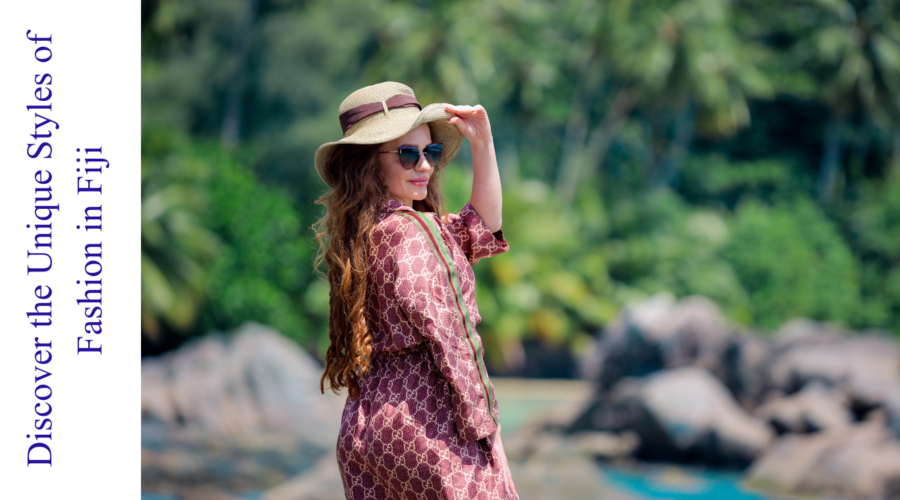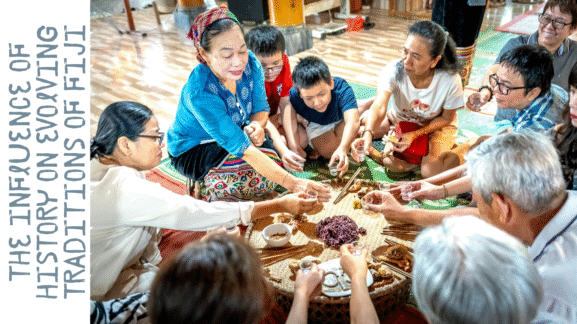Discover the Unique Styles of Fashion in Fiji
Fashion in Fiji is dynamic and features both the traditional and the contemporary. This Pacific country with beautiful views is famous for its gentle people and diverse fashion industry tied to its cultural background. Be it the original garb that uses native fabric or the modern-day outfits that incorporate international fashion with Fijian fusion, Fijian fashion is in a league of its own.
The fashion scene in Fiji encompasses more than mere wardrobe; it is an outpour of Fiji’s history, culture and inventiveness. Currently, Fijian designers are gaining popularity locally and internationally, making people note their creativity in designs and use of sustainable materials.
Historical Background of Fashion in Fiji
The traditional Fijian clothing was produced from fabrics which were easily available in the forests. The most dominant of these is Masi, locally referred to as tapa cloth, which is made from the bark of a tree – the Mulberry tree.
Traditional Attire
Men used to wear the sulu- a type of skirt made from masi or woven pandanus leaves. Liku was a type of grass or leaves that women of the community used to wear skirts made from them. Men and women wore ornaments using shells, bones and any other material that could be obtained from the surrounding environment. These traditional wears apart from being mere dresses also symbolized the culture in as much as they depicted the status of the wearer in society.
Influence of Europeans
The main changes in Fijian fashion were realized after the coming of European explorers and missionaries in the 19th century. Western codes of dressing were adopted and the replacement of conventional cloth was slowly done with European-styled clothes. But even today, the majority of the native Fijian population wears some sort of traditional outfit on formal occasions and ceremonies.
Since the last few decades, Fiji fashion has become a fusion of conventional and contemporary. This has been made possible by local designers who have risen been designing clothing that is close to traditional Fiji, yet fashionable. The combination of traditional and modern elements in clothing has created a new fashion look that can be attributed to Fijian.
Though the value of traditional Fijian outfits has been dwindling over the recent past, there has been some sort of revival recently. Many designers are now returning to what is more basic, using traditional procedures and fabrics. Events such as the Fiji Fashion Week help in this revival in as much as they afford the designers the chance to present their work while at the same time promoting Fijian traditions.
Modern Fashion Trends in Fiji
Modern fashion in Fiji is gracefully fused between the indigenous and the new generation styles.
Vibrant Colors and Patterns
Fijian fashion is relatively bright and colourful with beautiful patterns and skillfully made accessories. Fijian printed outfits have vibrant colours as a sign of the island’s natural texture and those colours are the Fijian fashion emblem. Often patterns are used, they reflect geometric ornaments and are typical for the given climate floras and landscapes such as flowers, leaves, water waves, etc. These aspects make the fashion of Fijian unique.
Casual and Comfortable
Due to the tropical weather experienced in Fiji, comfort is paramount when it comes to fashion in Fiji. Loose and light garments, thin materials, and plain dresses are preferred. The sulu, a kind of wrap-around skirt is popular with men and women of all ages, mostly because of its practicality and ease of use.
Currently, environmental conservation is part of the fashion industry trends in Fiji. Sustainability is widely implemented by designers by Incorporating sustainable materials into the creation. This entails organic fabrics, naturally sourced dyes and environmentally friendly processes of production. This trend spares the environment and also corresponds with Fijian people’s mentality which is deeply intertwined with nature.
Influence of Global Trends
Fijian fashion has a style while at the same time, it is not rigid and can follow the trends in the global market. Global fashion influences such as international fashion weeks, social media, and global brands influence fashion in Fiji. While incorporated into their creations, local designers may borrow the trends from them while putting a local twist into the fashion industry, thus making it vibrant.
Rise of Local Designers
There is a rise of designers in Fiji who are into fashion design and their creations are being sold in international markets. They are creating unique designs which have a Fijian feeling and incorporating traditional Fijian mannerisms in their work. These designers get opportunities in events such as Fiji Fashion Week where they exhibit their work technically upping the status of Fijian fashion internationally.
Spotlight on Fiji Fashion Week
Fiji Fashion Week is an event that enshrines fashion in Fiji. Taking place every year, this entertaining week aims at presenting the new tendencies, youthful designers and aspiring talents from the Fijian fashion industry. The event gathers local fashion designers, models and lovers of fashion who stage several fashion shows and related activities.
Fiji Fashion Week is to promote Fiji-born designers. This enables them to show their collections to an even larger market hence increasing the chances of them selling their products. Here this exposure leads them to have their careers grow and even earn recognition locally and even internationally.
Exciting Runway Shows
This is the case with the Fiji Fashion Week where the presentation of the fashion show is the main event. They have all sorts of clothing, from formal wear to sportswear, even swimwear. Every show is a platform whereby designers display their new trends and where the audience can see events of new trends in Fijian Fashion. The shows are characterized by bright colours, distinguishing patterns, and both, conventional and modern styles.
Collaboration and Innovation
Sometimes the Fiji Fashion Week hosts designers with other artists in what can be regarded as fashion-related entertainment. Such partnerships introduce new concepts and trendy wear on the fashion show. For instance, designers might collaborate with renowned artists to design the pieces and utilize organic resources to make them. It also does so through partnerships because such arrangements ensure that fashion in Fiji does not become stagnant and conservative.
AZA Design Studio Fiji
The face of the fashion market in Fiji is AZA Design Studio. Launched by Zulfikar Ali, this fashion studio has gained a relatively fast track in the fashion market. Based in Raiwai, Garden City, AZA Design Studio retails fashionable and quality clothing products that have a rich traditional Fijian touch on products.
Zulfikar Ali, the founder of AZA Design Studio has experience in the fashion industry. He was a fashion buyer employed with Tappoo’s, one of the largest retail outlets in Fiji before opening his studio. His feeling of fashion prompted him to be able to design and come up with more styles that would suit the Fijian people.
Overcoming Challenges
Ali always wanted to be his boss but starting a new business is always a difficult task. The COVID-19 pandemic specifically was not easy to deal with. But to Ali, this was a chance to do what he wanted to do in life. With the help of family and friends, he was able to open AZA Design Studio out of adversity.
Unique Designs
The firm known as AZA Design Studio is one of the most renowned for its different approaches to designing. His collections have vivid colour combinations, patterns and shapes; they contain elements of both classic and contemporary styles. Such style has pulled many fashion lovers in Fiji toward AZA Design Studio.
In Fiji, fashion ranges from the creativity provided during Fiji Fashion Week to designs from AZA Design Studio Fiji, which is quite interesting. Sustainability and the concept of Fijian craftsmanship lie at the core of fashion in Fiji – as does the appreciation of the historical values of the Fijian culture as well as the notion of that of the future. Thus, it is safe to conclude that as this industry is growing, it has the potential to remain a regional force.



